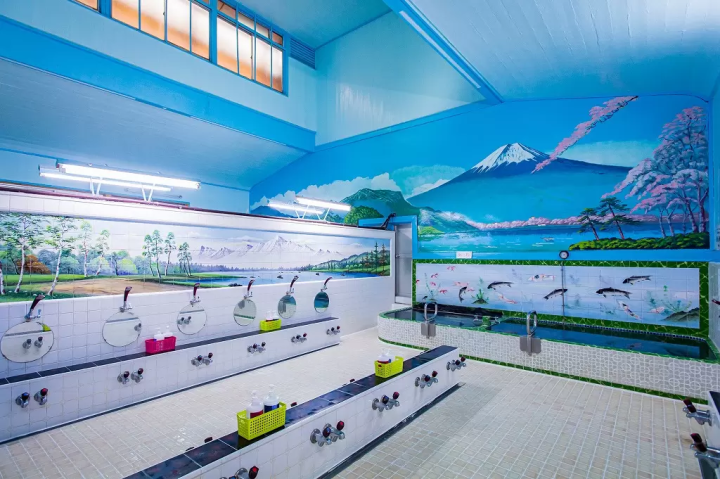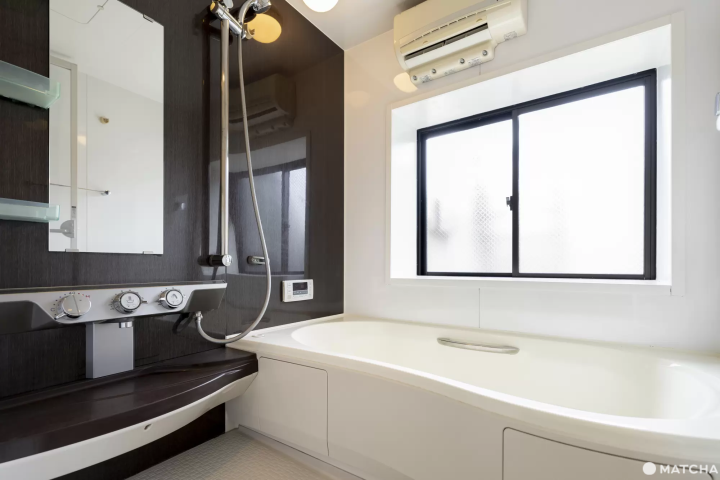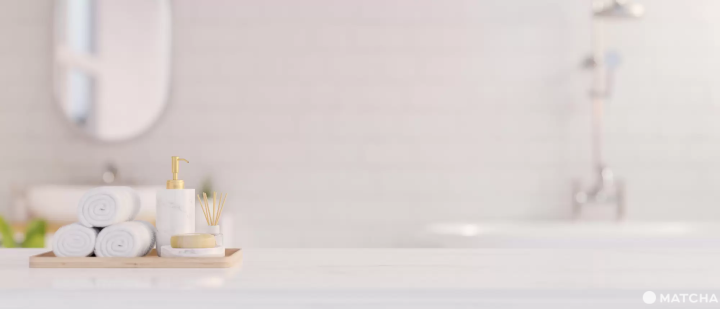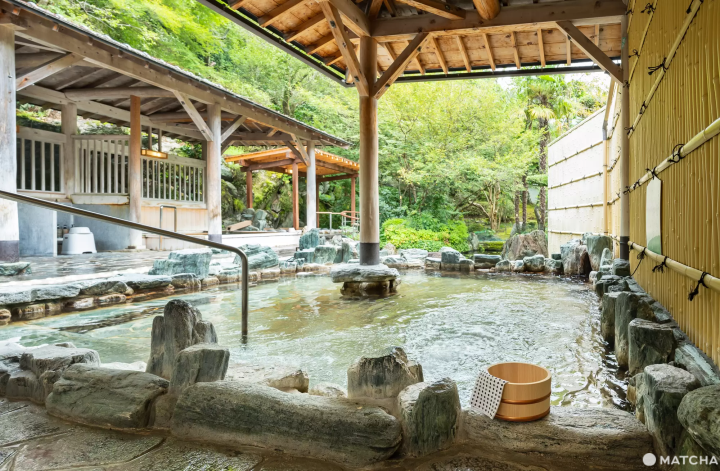Bath Culture In Japan: What Every Visitor Should Know Ahead Of Time

Taking a bath is an everyday occurrence, but in Japan, there are rules to follow at onsen (hot springs), public baths, or even when soaking in the tub at home. Read on to learn more about rules, what to wear and bring, recommended onsen, and more!
Bath Culture in Japan
1. Bathing Manners in Japan - How to Enjoy Hot Springs and Public Baths
2. Japanese Onsen - Natural Hot Springs
3. Japanese Bathhouses
4. Things to Know Before You Use Onsen and Sento
5. Things You Should Take To The Sento
6. After Entering The Sento
7. Manners In The Bathtub
8. After Your Bath
9. Bathtubs In Japanese Homes
10. Why Do Japanese People Like Soaking in Bathtubs?
Bathing Manners in Japan - How to Enjoy Hot Springs and Public Baths

While showers are a necessary part of everyday life, the Japanese don’t just take showers, they love soaking in bathtubs. Most people in Japan think of the bathtub as washing away not only their sweat and dirt from the day but their fatigue, too. so it is typically custom to take baths every night.
Everyone can experience this part of Japanese culture by dipping into onsen (hot springs) and public baths. This article is a guide to how to bathe properly and have a relaxed time; continue reading for bathing tips, what to bring to the onsen, and more.
Read also
Historical Background of Bathing in Japan
Bathing in Japan has deep historical roots that go back thousands of years, intertwining with the country’s religious, cultural, and social practices.
Origins and Religious Influences
The practice of bathing in Japan is closely tied to Shintoism and Buddhism, two of the country’s predominant religions. Shintoism, Japan's indigenous faith, places a strong emphasis on purification rituals, viewing water as a sacred element for cleansing both body and spirit. This belief gave rise to rituals like misogi, where individuals cleanse themselves in natural water sources, such as rivers or waterfalls.
When Buddhism arrived in Japan during the 6th century from China, it further shaped the culture of bathing. Buddhist temples often included communal baths, known as yuya, for monks and laypeople to purify themselves before prayers. These baths were precursors to the public baths, or sento, that became widespread in later centuries.
Development of Onsen and Sento
Natural hot springs, or onsen, were discovered early in Japan’s history and became revered for their healing properties. Historical texts like the Manyoshu, Japan’s oldest poetry anthology, mention onsen as places of relaxation and rejuvenation. By the Edo period (1603–1868), onsen towns such as Kusatsu and Hakone flourished, becoming destinations for both health treatments and leisure.
Public baths, or sento, emerged as urbanization increased during the Edo period. These facilities served as communal hubs where people could bathe, socialize, and relax. At the time, many homes lacked private bathing facilities, making sento an essential part of daily life.
Modernization and Cultural Preservation
The Meiji era (1868–1912) ushered in a wave of modernization, and with it came changes to bathing practices. Western-style bathtubs and private bathrooms became more common, but the communal and therapeutic aspects of Japanese bathing culture remained integral. Today, sento and onsen continue to be cherished, not just for hygiene but for tradition and sense of community.
Japanese Onsen - Natural Hot Springs

photo by pixta
Hot spring baths, or onsen, are essential parts of the Japanese bathing culture. The water in hot springs must contain a certain amount of minerals and naturally-occurring chemicals to be considered onsen. Hot springs have been used for thousands of years in Japan, once for their medicinal purposes as "toji." They remain popular for their associated many health benefits to this day.
Japan is home to many volcanoes, which is why there are more than 20,000 onsen facilities located across the country. While there are onsens in Tokyo, if you head to more rural areas, you will discover many more onsens, as well as onsen towns where traditional Japanese inns are gathered in abundance.
One way to enjoy hot springs is on an onsen trip. This involves staying at a hotel with hot spring facilities, eating delicious food, and having fun in the surrounding sightseeing areas. There are many hot spring districts in Japan, but some of the most popular are Hakone, Arima Onsen, and Beppu.
↑ Return to the top of article.
Japanese Bathhouses

Photo by Pixta
Sento, or bathhouses, are baths for public use, not tourist destinations. A simple bathhouse consists of rooms for the baths, separated by gender, and a locker room where you get undressed and dressed. Expect to be there for about one hour in total and spend less than 500 yen (rates vary by city; it is 470 yen to use a sento in Tokyo).
In the past, when bathtubs were not typical features of the average home, it was normal for people to go to a sento to take baths. Even now, some people regularly head to a sento when they want to stretch out in a spacious bathtub, or because they enjoy talking with the other patrons.
A popular type of sento facility is super sento. Super sento offers spa baths, onsens, and many different kinds of bathtubs, as well as saunas. Super sento prices vary from branch to branch and range from 500 to 2,500 yen. Examples of super sentos include Spa LaQua next to Tokyo Dome, and Spa World in Osaka.
↑ Return to the top of article.
Things to Know Before You Use Onsen and Sento
Here we’d like to mention some manners and rules that you should keep in mind when visiting onsens and sento, so as to avoid any misunderstandings or anything unpleasant.
People Who May Be Denied Entry
People With Tattoos
In Japan, tattoos are associated with organized crime regardless of the gender of the tattoo bearer. Even small, cute tattoos may get you denied entry at an onsen or sento (plus pools, waterparks, and public beaches too), so check the onsen’s webpage beforehand to confirm their particular tattoo policy.
Please note that this is changing, and certain parts of Japan may be more lenient than others. For example, Beppu allows people with ink entry. Also, tattoos coverable with tattoo sleeves and stickers are usually acceptable.
Sick People
People with heart, kidney or lung diseases should consult with a doctor before visiting an onsen.
People With Fevers
While this holds true for regular bathtubs as well, your symptoms may get worse if you visit an onsen, so avoid the situation at all costs.
Drunk People
The heat can cause drops in blood pressure and induce arrhythmia, which may be fatal.
People Who Are Bleeding Or Women On Their Periods
Avoid visiting onsens if you have open cuts to prevent infections. Immune systems weaken during menstruation, which makes it easier to contract a disease or infection.
It’s good manners to avoid using onsens during menstruation, particularly on heavy flow days, even when using a tampon. Onsens, like pools in Japan, do not use powerful disinfectants, so it’s not very sanitary for anyone involved.
↑ Return to the top of article.
Things You Should Take To The Sento
1. A Towel
There are two kinds of towels - large and small - in the dressing areas. At some inns and hotels, however, there are no towels in the dressing rooms, and customers need to bring towels from their rooms.
The small towels are for washing your body in the bathtub, and for drying off before you return to the dressing room. You can bring the small towel into the bathtub.
2. A Rubber Hairtie
Just like if you were visiting the pool, bring a hair tie if you have long hair to keep it from touching the water in the bath.
Sentos - Soap And Shampoo
Most onsen inns and hotels will have toiletries available, but you have to bring your own to a sento––especially if it is a small, local one.
Take your things, and once you’ve handled your shower business, head to the bathtub!
You Don’t Need A Swimsuit
At sentos and onsen, people bathe in the nude. Many places actually prohibit wearing swimsuits in the bath, so there’s no need to bring one. Having said that, some places will allow customers to wear swimsuits. Please check in advance if you must wear a swimsuit for personal reasons.
Take Off Your Shoes Or Slippers
You need to walk through the dressing room barefoot. Take off your shoes or slippers.
After Entering The Sento
No Running
Onsens can have very slippery floors due to the ingredients in the hot spring water. Avoid running. Children and pregnant women, in particular, should exercise caution.
Wash Up in the Shower Before Warming Up in the Bathtub
Before you get in the bathtub, thoroughly clean yourself in the shower. The bathtub is a place to warm up, so swimming or washing yourself in the tub is considered very bad manners.
Rinse Off Chairs And Buckets after Use
After using the provided chairs and buckets, give them a quick rinse and put them back in their original spots.
Many Sentos Prohibit Bringing In Alcohol
Everyone in the bathtub will be nude. In most cases, breakable glass bottles are not allowed in the bathtub for safety reasons.
Manners In The Bathtub
No Washing Clothes
You cannot wash clothes in the bathtub. It is also bad manners to let your towel touch the water in the bathtub. This is because any leftover soap or detergent will get into the water.
After Your Bath
Towel Off And Head Back To The Dressing Room
Before you go back into the dressing room, towel off with the larger towel so that you don’t track water around.
Check To Make Sure You Have All Your Belongings
Be careful not to leave anything behind in your locker.
Bathtubs In Japanese Homes

The majority of Japanese homes and larger apartments have separate rooms for the toilet and bathtub, and only the room with the bathtub is called the bathroom.
Bathrooms will have a space to shower as well, separate from the bathtub. The first thing people do when getting in the bath is take a shower: wash your hair and body, and take care of anything else you need to in the shower side. According to Japanese tradition, you aren’t supposed to wash your body in the bathtub.
Why Do Japanese People Like Soaking in Bathtubs?

Japan is extremely hot and humid in the summer. To cope with this, Japanese homes have traditionally been designed to allow for good ventilation. For the same reason, homes can become very cold in the winter, which is why people have come to enjoy warming up in the bath. Bathing in Japan is not merely a hygienic practice; it is deeply connected to health, wellness, and spiritual well-being.
Physical Benefits
1. Improved Circulation: Immersing the body in warm water stimulates blood flow, which can alleviate muscle pain, joint stiffness, and fatigue. The heat from onsen or sento baths dilates blood vessels, enhancing oxygen and nutrient delivery throughout the body.
2. Skin Health: Many onsen are rich in minerals such as sulfur, magnesium, and sodium bicarbonate, which are believed to improve skin conditions like eczema and psoriasis, leaving the skin smooth and refreshed.
3. Detoxification: Sweating induced by hot baths helps remove toxins from the body, contributing to overall health and vitality.
Mental and Emotional Benefits
1. Stress Reduction: Bathing promotes relaxation by reducing cortisol levels, the hormone associated with stress. The serene atmosphere of onsen, often set in natural surroundings, enhances this calming effect.
2. Sleep Improvement: A warm bath before bedtime has been shown to regulate body temperature, making it easier to fall asleep and stay asleep.
3. Mindfulness: Japanese bathing practices encourage mindfulness, allowing individuals to focus on the present moment and disconnect from daily stressors.
Modern Trends and Global Influence

Japanese bath culture has not only preserved its traditional essence but has also adapted to modern lifestyles and gained global recognition.
Resurgence of Traditional Bathhouses
In recent years, there has been a revival of interest in traditional sento and onsen, especially among younger generations. Designers have reimagined sento with modern aesthetics, blending traditional architecture with contemporary elements. Many new facilities offer additional amenities, such as cafes and co-working spaces, making them attractive to a wider public.
Technological Innovations
Advancements in technology have also influenced bathing practices. Modern Japanese homes often feature highly automated bath systems that allow users to preset water temperature and depth with a touch of a button. At high-end onsen resorts, services like aromatherapy baths and chromotherapy lighting create a spa-like experience.
Tourism and Global Popularity
Japanese bath culture has become a significant interest for international tourists. Destinations like Beppu, Hakone, and Oita attract millions of visitors annually. To cater to diverse clientele, some onsen now welcome visitors with tattoos, breaking away from traditional restrictions.
FAQ
How to use a public bath in Japan?
Using a public bath, known as an "onsen" or "sento," in Japan typically involves several steps. Upon entering, you pay an admission fee. Separate areas for men and women are common, so make sure to go to the appropriate section. Before entering the bath, rinse your body thoroughly at the shower stations. Once clean, you can enjoy the hot baths. Remember to be respectful of others, keep quiet, and avoid bringing towels into the water. After bathing, dry off before leaving the bathing area. It's also important to follow any specific rules displayed at the facility, such as regarding tattoos or hygiene practices. Enjoy the relaxing experience!
What are Japanese public baths called?
Japanese public baths are commonly known as "Sentō" (銭湯) or "Sento" in Romanized form. These are traditional communal bathhouses where people can bathe and relax.
What do you wear in a Japanese public bath?
In a Japanese public bath, it's customary to enter the bathing area completely naked. Before entering the communal bath, you should remove all clothing, including underwear. Most public baths provide small towels for modesty while walking around but these towels should not be brought into the bathing water. Remember to bring your own toiletries like soap and shampoo unless they are provided by the facility. Once inside, enjoy the soothing waters and the tranquil ambiance of the traditional Japanese bathing experience.
Is public bath the same as onsen?
While both public baths (sento) and onsens are communal bathing facilities in Japan, there are key differences between the two. Sento uses heated tap water, while onsens are natural hot springs that contain mineral-rich thermal waters. Onsens are typically located in areas with geothermally heated water sources, offering various health benefits. Additionally, onsen facilities are usually more traditional and can be found in scenic locations. Sento, on the other hand, are more commonly found in urban areas and use regular heated water. Both provide a relaxing and culturally enriching experience, but the source of the water and the setting distinguish them.
Are public baths in Japan unisex?
In Japan, public baths (sento) are typically gender-segregated, with separate bathing areas for men and women. This division is maintained to respect cultural norms and ensure privacy and comfort for bathers. Unisex public baths are less common in Japan, although some modern facilities or specific establishments might offer unisex or mixed-gender bathing options at certain times or in specific areas, but this is not the norm. It's important to check with the establishment beforehand if you are specifically looking for a unisex bathing experience.
Why is bathing so popular in Japan?
Bathing holds significant cultural and social importance in Japan for several reasons. Firstly, it's seen as a way to relax, unwind, and promote overall well-being. The practice of soaking in hot springs (onsen) is believed to have therapeutic benefits due to the mineral properties of the water. Additionally, bathing is deeply ingrained in Japanese etiquette and cleanliness rituals, reflecting a respect for communal hygiene and personal grooming. Bathing is also a way to socialize and bond with others, particularly in more traditional settings like onsen resorts where it's a communal activity. Overall, the cultural emphasis on bathing in Japan stems from a combination of health, relaxation, cleanliness, and social aspects that have been cultivated over centuries.
Ettiquete for Bathing in Japan
You might think that there are too many manners associated with public bathing, but the bathtub is a place to relax in Japan. All of these rules are about being considerate to the other customers around you, so keep that in mind, and enjoy your long hot soak in a spacious bathtub.
A Japanese teacher, calligrapher, singer in my room!






































![[Coupon Available] Attention Overseas Winter Sports Fans! Nagano's Sports Depot Has Evolved](https://resources.matcha-jp.com/resize/720x2000/2026/01/05-254819.webp)
![[2 hours from Tokyo ] 10 Quiet and Breathtaking Views of Mount Fuji in Yamanashi Hokuto City , Yamanashi - Part 2](https://resources.matcha-jp.com/resize/720x2000/2025/12/16-253037.webp)

![[Reopening in March 2026] Ikoma Sanjo Amusement Park Park, 45 minutes from Osaka , with free admission](https://resources.matcha-jp.com/resize/720x2000/2024/08/28-194409.webp)